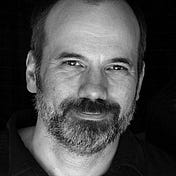
Richard J. Goodrich - The Peripatetic Historian
Book Author
The Peripatetic Historian: former history professor now travelling the world and writing about its history. Newsletter: http://rjgoodrich.substack.com.

Book Author
The Peripatetic Historian: former history professor now travelling the world and writing about its history. Newsletter: http://rjgoodrich.substack.com.